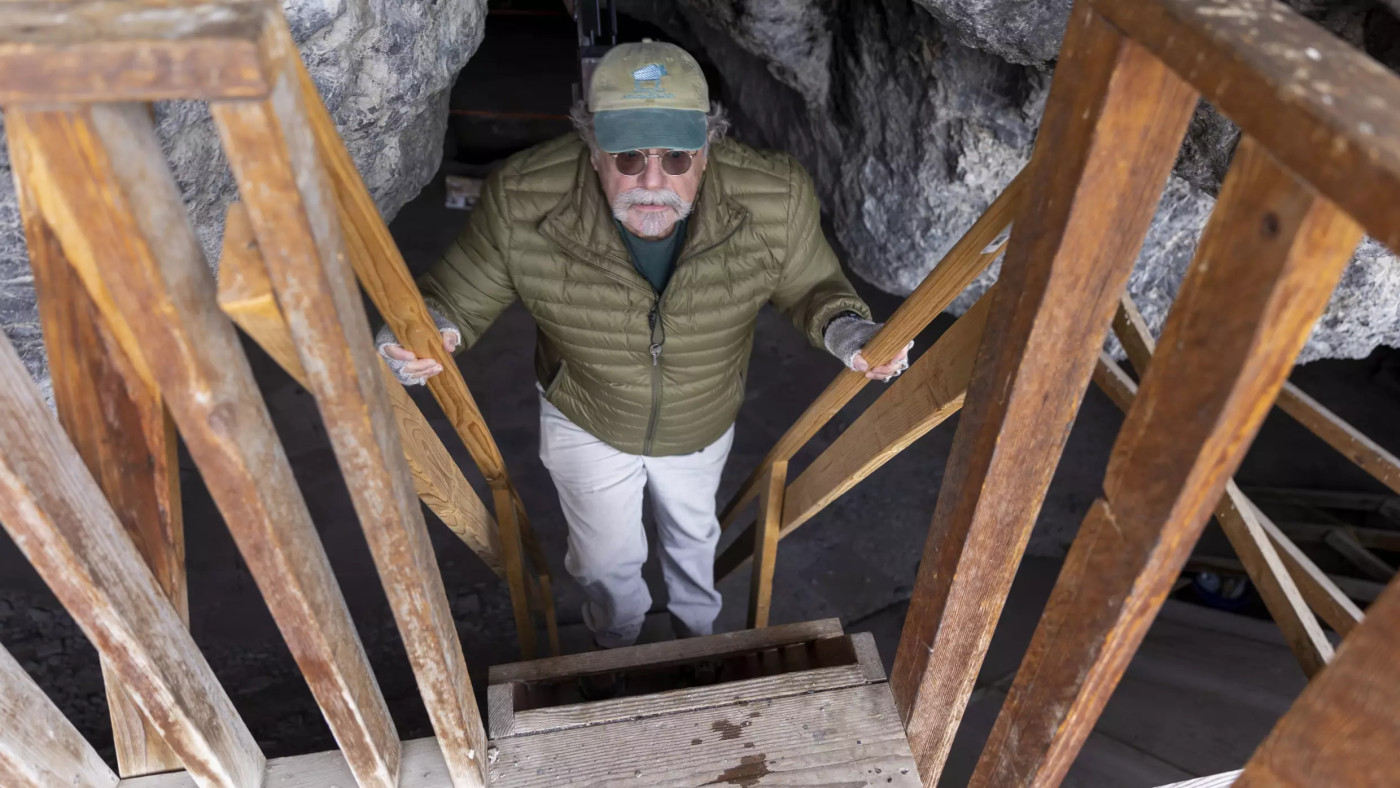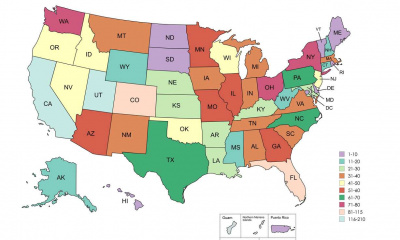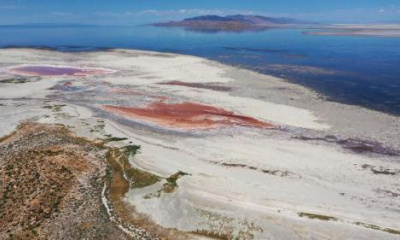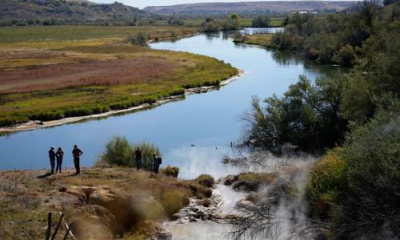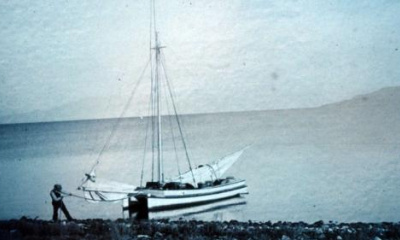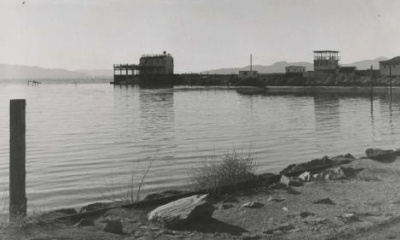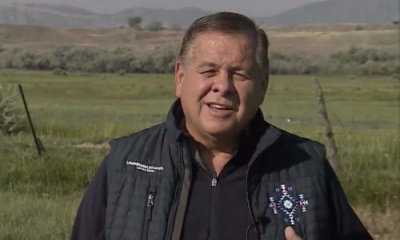Many Salt Lakers driving the 120 miles to Wendover are after the kind of rest and relaxation they can’t find in the beehive state: gambling, cheap liquor or maybe even some recreational marijuana.
But archaeologist Ron Rood has something very different in mind when he makes his regular trips — preserving ancient history.
Rood works for Metcalf Archaeological Consultants, which partners with the state to steward Danger Cave State Monument.
“We’re not making sites that have 12,000-year-old components anymore,” he said on a cold, Sunday morning in early December. “So that's why it's really important that these sites are protected.”
Danger Cave sits inside a limestone cliff overlooking Interstate 80 and the famed Bonneville Salt Flats. It was formed when ancient Lake Bonneville covered some 20,000 square miles — reaching into Idaho and Nevada and as far south as Fillmore, Utah. But the combination of a broken natural dam 14,500 years ago and climate change caused the inland sea to shrink.
The cave overlooked a marshy wetland 8,000 years ago, and water fed by nearby springs provided a rich location for hunter-gatherers to set up base camp for the winter.
Rood looked over the landscape with the eyes of a time traveler.
“We'd see cattails; we'd see bull rush. We probably see willows. We'd see ducks and coots and shorebirds all around in the marsh area. It would have been lush.”
12,000 years of archaeology
Around his neck, Rood wears the key to the heavy iron gate that protects against vandals and looters. He negotiates the first padlock and gets on one knee to unlock the second. He then swings open the large, creaking bars. The gate lands with a clang and we make our way down a ladder to the cave floor.
“You're out of the wind. It's always a little warmer,” he remarked appreciatively.
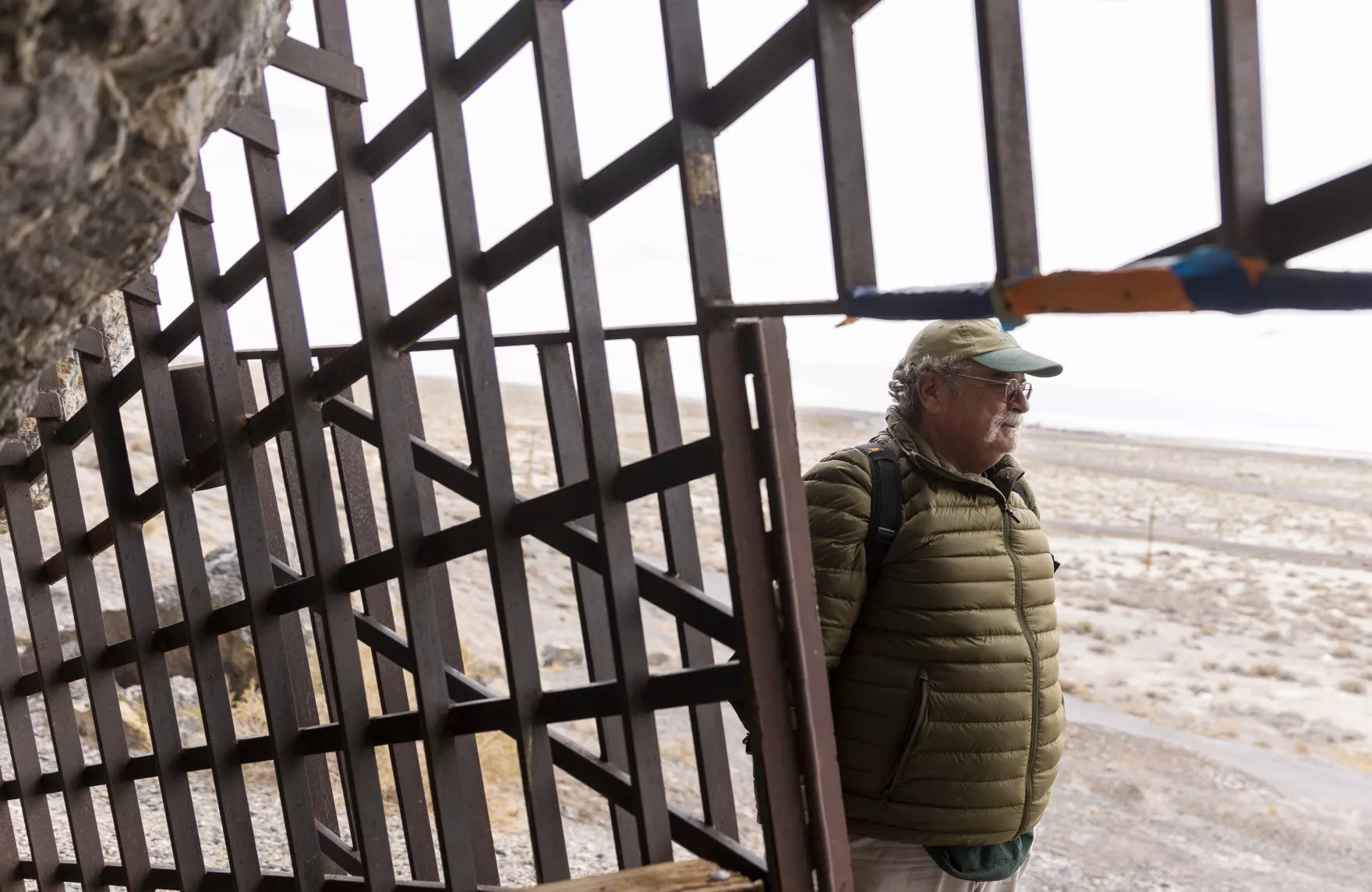
Archaeologist Ron Rood stands outside of the entrance to Danger Cave in Tooele County on Sunday, Dec. 11, 2022. Photo by Ben B. Braun, Deseret News.
It’s a big space: around 100 feet deep and 12 to 15 feet high. These days, it’s home to a large population of bats that nestle in the high cavities of the ceiling.
The cave is dry, making it what Rood called “a preservation gold mine.” It was the ideal condition for capturing the lives of the people who sought shelter there.
That’s what made it such a remarkable site for archaeologists in the 1930s, 40s and 50s. University of Utah archaeologist Jesse Jennings wasn’t the first to conduct research there, but Rood said his vision still provides rich material for scientists now.
“Archaeology was kind of crude by our standards today,” said Rood. He explained some researchers only saw value in saving in-tact, impressive artifacts. And they might not pay close attention to animal or plant remains.
“Jennings wasn’t like that. He saved most everything.”
And the cave yielded evidence of thousands of years of human use. The teams recovered fragile remnants like leather and wood, basket fragments, animal hair and parts of baskets woven from cattails gathered nearby.
And Jennings found thousands of artifacts called “quids.”
“ … basically chewed up chunks of plant roots or plant leaves. People would chew them, extract some salts and sugars out of them and spit them out.”
Rood said Jennings called them “unlovely specimens,” but today they have the potential for ancient DNA studies.
Life in Danger Cave
Hunter-gatherers traveled throughout what is known as the Great Basin. The summer might see family groups in Southern Idaho, in the Ruby Mountains of Nevada or as far south as St. George, Utah.
There were times when communities gathered in large groups to share ideas and information, take part in ceremonies and look for spouses.
But in the winter, Danger Cave offered shelter, food and supplies to extended family groups of 20 or 25 people.
“There would be maybe two grandmas and grandpas, there'd be aunts and uncles, there'd be mom and dad, brothers and sisters, little kids, there'd be a couple of little babies,” Rood explained looking across the cave. “There'd be a dog or two or three or four maybe.”
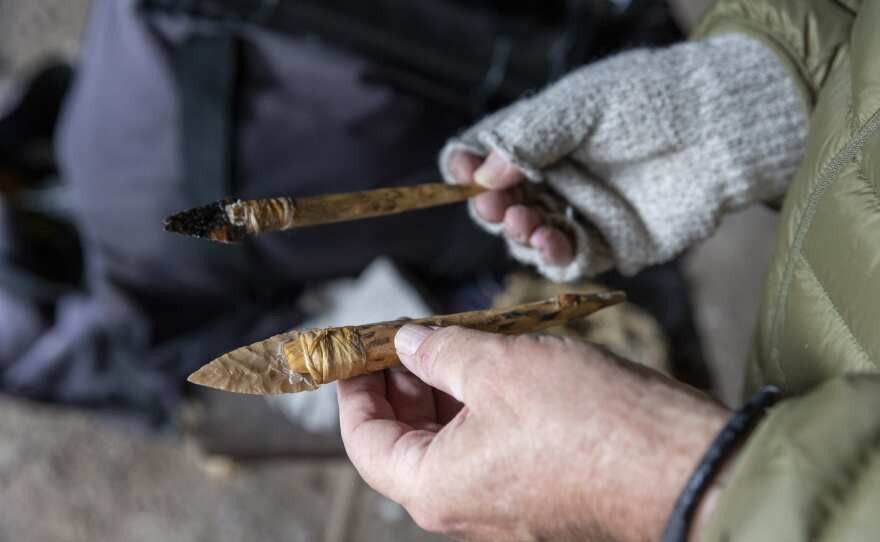
Archaeologist Ron Rood holds an artifact for a photo inside Danger Cave in Tooele County on Sunday, Dec. 11, 2022. Photo by Ben B. Braun, Deseret News.
Rood has been involved with Danger Cave for around 25 years, and he gives tours to adults and school children. For everyone who comes through, there’s one point he always tries to make: this place was a home.
In a sort of reverie, he described the sounds that would have echoed off the walls and the smells that would have greeted people coming into the space.
Several sagebrush or juniper campfires would have dotted the cave floor — providing warmth and smoke for preserving meat. Moms may have comforted crying babies and yelled at rambunctious kids to stay away from the flames as the smell of duck, bighorn sheep or rabbit meat permeated the air.
Dogs may have barked, greeting hunters as they returned. The people may have sat at the mouth of the cave butchering the meat, saving skins for rabbit robes and using the bones to make tools.
But it’s a bundle of 5,000-year-old painted sticks that were found at the site that evokes not just the work — but also the play of the people who stayed here.
“These could be some kind of a game,” Rood explained. “We would maybe hear people yelling when they win and moaning when they lost.”
It’s the sounds and the smells that would evoke the kind of nostalgia we might feel for home.
“Like when you go home at Christmas or something, there's a smell in the house that brings back memories. I think here that would have been the same thing,” Rood said.

A bundle of gaming sticks discovered at Danger Cave during a 1953 University of Utah expedition. Photo courtesy Natural History Museum of Utah.
A lesson in balance
Rood said the marshes were still in the Danger Cave environs until the 1930s. In fact, the springs that fed them remain.
“The water is still here,” he said. “It's just being siphoned off for industry.” As proof, he stops at a pipe pumping water into a canal that heads off to a mineral plant in the distance. Now, he says, it’s just a mudflat. And to the south is the desert.
“Pretty dry, no green, Interstate 80, the off ramp to Wendover,” Rood mused. “You know, now this looks like a pretty inhospitable place if you're a hunter-gatherer.”
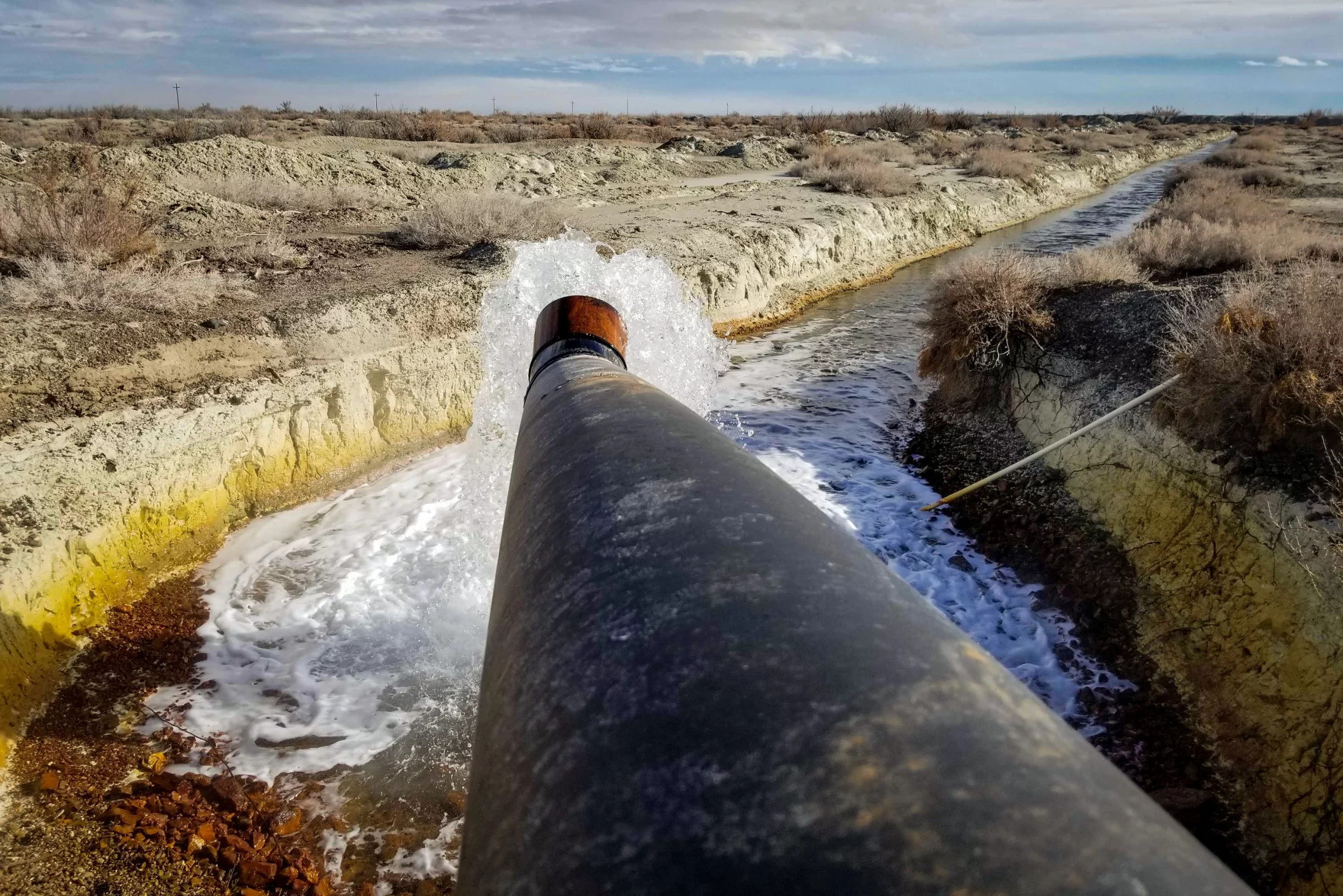
Piped spring water is rerouted to canals near Danger Cave in Utah's west desert for the potash plant, Dec. 11, 2022. Photo by Elaine Clark, KUER.
Lake Bonneville receded for more than 14,000 years, but Rood said that the historic low levels the Great Salt Lake reached this year isn’t part of a natural process.
“Just the general warming of the Earth seems to be exacerbated now with more carbon being put into the atmosphere,” he said. “And that's on us. That's on people.”
Hunter-gatherers lived the successful lifestyle seen at Danger Cave for thousands of years. But, Rood said, they didn’t overdo it.
“There's this balance that they naturally knew and they didn't over exploit a certain animal or a certain plant … they knew when they needed to back off.”
It’s something Rood said he tries to remember in his own life.
“We've been around a couple hundred years and we've managed to push it to the limits and beyond. So we all should maybe take more lessons from hunter-gatherers.”
Ron Rood’s essay “A Lizard Name Larry, Danger Cave, and Human History in the Great Salt Lake Basin” appears in the Great Salt Lake Anthology, produced by the SLCC Community Writing Center as part of the Great Salt Lake Collaborative.

